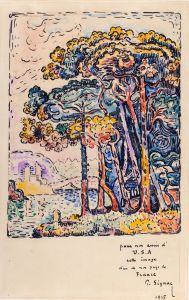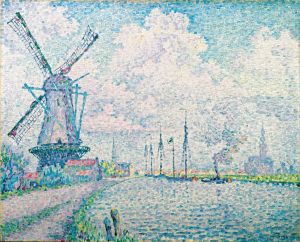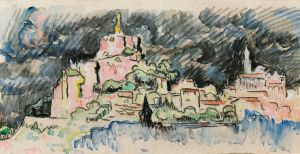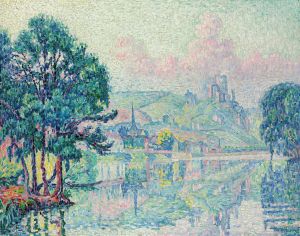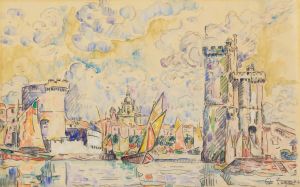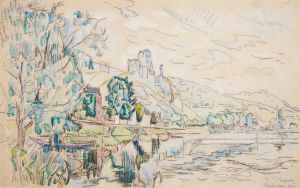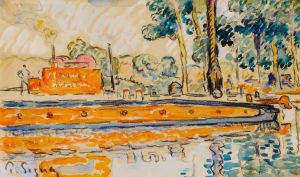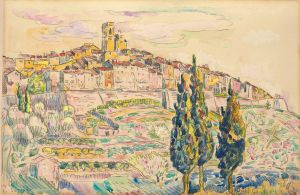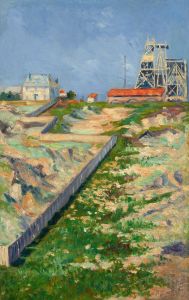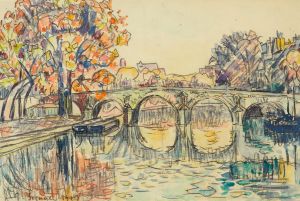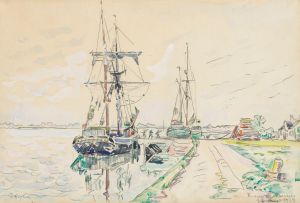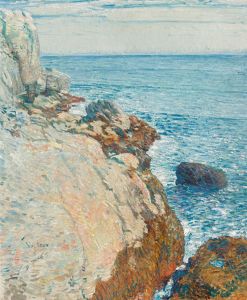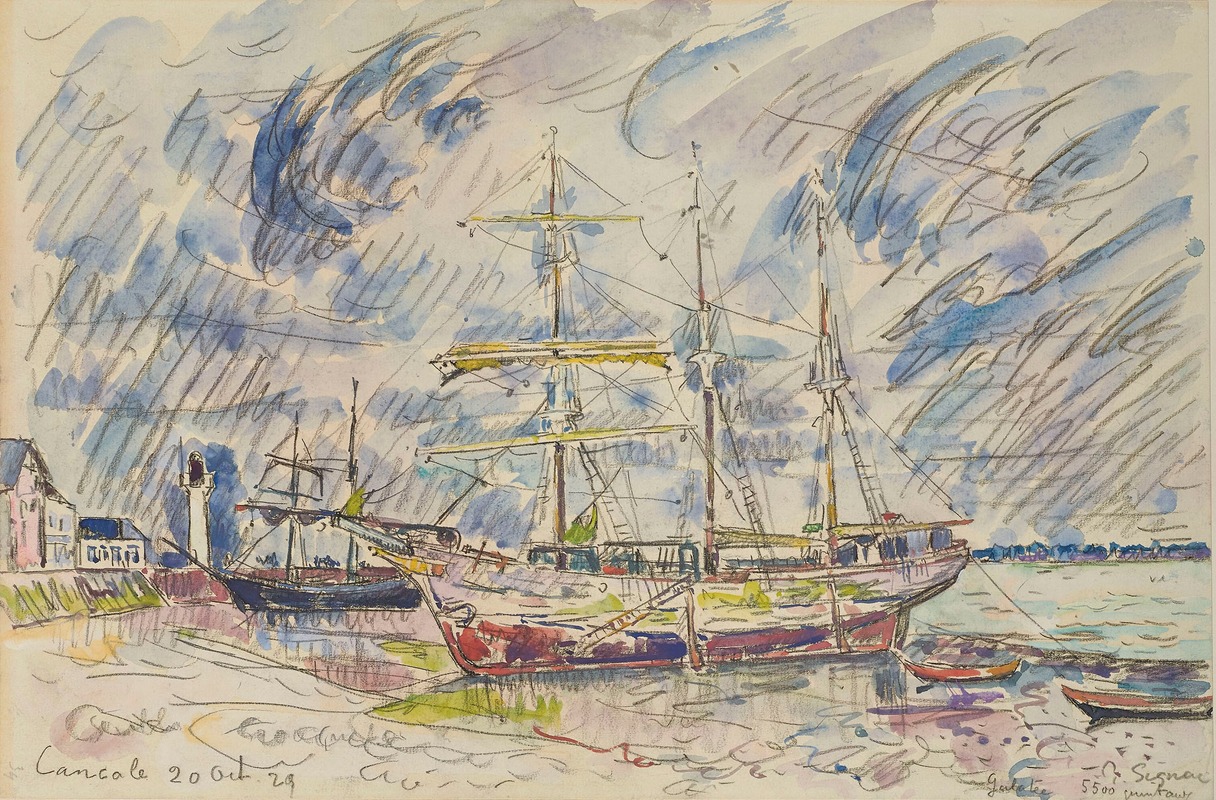
Cancale
A hand-painted replica of Paul Signac’s masterpiece Cancale, meticulously crafted by professional artists to capture the true essence of the original. Each piece is created with museum-quality canvas and rare mineral pigments, carefully painted by experienced artists with delicate brushstrokes and rich, layered colors to perfectly recreate the texture of the original artwork. Unlike machine-printed reproductions, this hand-painted version brings the painting to life, infused with the artist’s emotions and skill in every stroke. Whether for personal collection or home decoration, it instantly elevates the artistic atmosphere of any space.
Paul Signac's painting "Cancale" is a notable work by the French Neo-Impressionist artist, created in 1890. Signac, a key figure in the development of the Pointillist technique, was deeply influenced by the scientific color theories of Michel Eugène Chevreul and the work of Georges Seurat, with whom he closely collaborated. "Cancale" exemplifies Signac's commitment to this technique, characterized by the use of small, distinct dots of color applied in patterns to form an image.
The painting depicts the picturesque fishing village of Cancale, located on the northern coast of Brittany, France. Known for its oyster farming and scenic beauty, Cancale has long been a source of inspiration for artists. Signac's choice of this location reflects his interest in capturing the vibrant interplay of light and color found in natural settings, a hallmark of his artistic style.
In "Cancale," Signac employs his signature Pointillist technique to render the scene with meticulous attention to detail. The composition is filled with a harmonious blend of colors, capturing the essence of the coastal landscape. The use of complementary colors enhances the luminosity of the painting, creating a vivid and dynamic representation of the scene. The sky, water, and boats are depicted with a mosaic-like quality, showcasing Signac's skill in manipulating color and form to evoke a sense of movement and atmosphere.
Signac's work during this period was marked by a transition from the more rigid application of Pointillism seen in Seurat's work to a freer, more expressive use of color and brushwork. "Cancale" is a testament to this evolution, as Signac began to explore the emotional and expressive potential of color, moving towards a style that would later influence the Fauvist movement.
The painting is part of Signac's broader exploration of maritime themes, a subject that fascinated him throughout his career. His love for the sea and sailing is evident in the careful depiction of the boats and the serene yet lively atmosphere of the harbor. This affinity for nautical scenes is a recurring motif in Signac's oeuvre, reflecting his personal passion for sailing and his belief in the symbolic power of the sea.
"Cancale" is housed in the Musée d'Orsay in Paris, which holds an extensive collection of works by Signac and other artists of the Neo-Impressionist movement. The painting remains an important example of Signac's contribution to the development of modern art, illustrating his innovative approach to color and composition. Through "Cancale," viewers can appreciate the artist's unique vision and his ability to capture the ephemeral beauty of the natural world with precision and sensitivity.





